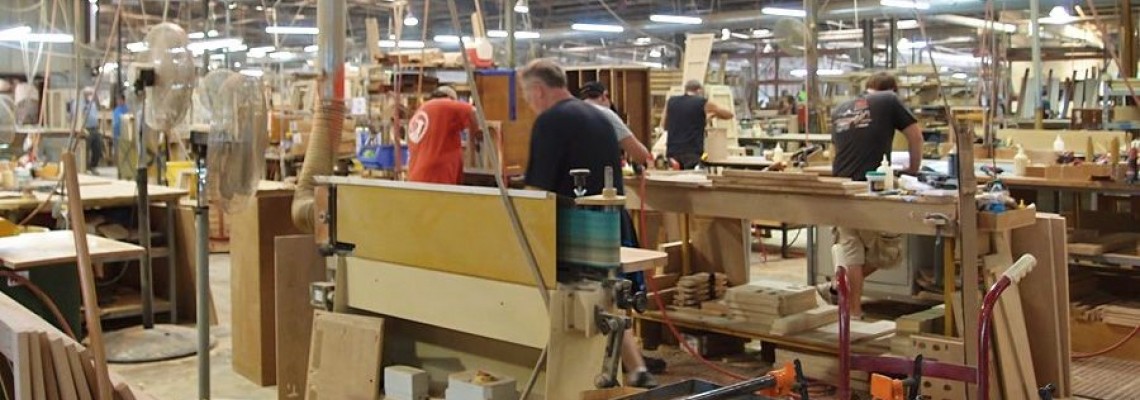
Mist humidification in the woodworking industry

In shops for the processing of wood, as well as various wood products, it is required to maintain a relative humidity of wood within 50-55%, depending on the technological process in production.
In order to avoid such negative factors as a decrease in the volume of wood blanks as a result of drying out and their further deformation, cracking and warping, it is required to install a humidification system in the premises. This is especially true for wood drying chambers, where the operation of the humidification system is necessary to organize the exposure of wood to high humidity air during specialized drying stages - heat treatment and conditioning.
In furniture factories and factories for the production of wood-based panels, due to the lack of moisture, there are problems with product defects. Dry wood absorbs adhesives and paints too quickly. This leads to a loss of product quality.

Owners of woodworking enterprises face many problems related to insufficient indoor humidity:
1. Wood shrinkage. Relative humidity affects the volumetric dimensions of wood, which is a very hygroscopic material.At the same time, changes in different directions occur disproportionately, which leads to cracking, delamination and deformation of the array.
2. Poor adhesion of adhesives. Overdried wood absorbs solvents from the adhesive before it has time to dry. The seams are fragile, the finished product has to be written off the marriage. The reason is simple - when using adhesive compositions, it is required to strictly comply with the requirements for the moisture content of the glued lamellas, which should not differ by more than 1.5%.
3. Violation of the integrity of the paintwork. Dry wood absorbs solvents faster than the varnish has time to dry. As a result, the coating turns out to be uneven, loses its aesthetic glossy appearance.
4. Changing the geometric dimensions of finished wood products. All of the above problems, as well as improper climatic storage conditions, cause deformation of finished products. They change geometric dimensions, shape and become unusable.
5. Deterioration of well-being of employees. Due to the increased dust formation, dryness appears, the eyes turn red, and the mucous membranes become inflamed. This is especially noticeable in factories with an air aspiration system that additionally dries the air in the room.

The installation of a fog system in woodworking enterprises solves the following tasks:
· Reduction of defective products.Blanks and products retain their proportional appearance and size;
· Faster processing of materials. Wood becomes more docile in processing;
· Dust suppression. Reduced dust reduces the amount of rejection in furniture workshops due to abrasion of laminated chipboard and MDF boards, as well as reducing the fire hazard and improving staff well-being.
· The adhesion of wood blanks improves. The applied paint coating is more even and smooth, and the parts to be glued, veneer or laminate, adhere more strongly throughout the entire service life.
· Cooling of production sites. Reducing the air temperature in production rooms by 5-12°C, thanks to the effect of evaporation, works as a natural cooling system.
· Increasing profitability. Increasing revenues by optimizing production processes. Reduce maintenance costs and maintain overall order and cleanliness.

To prevent wood and finished products from getting wet, the use of a high pressure misting system is recommended in the wood industry. It consists of the following components:
- Pump capable of delivering 25 to 75 bar (high pressure pump);

Leave a Comment